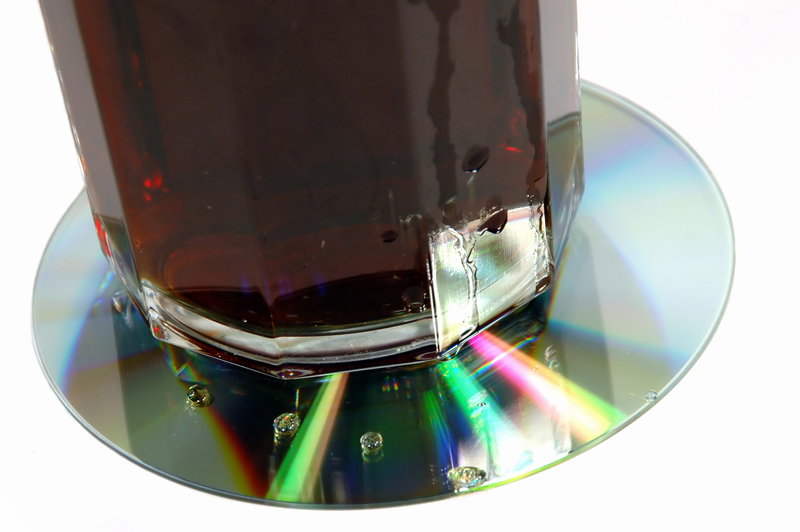Recyclable Packaging Strategies
Posted on 22/04/2025
The growing emphasis on sustainability has led to a significant rise in the demand for recyclable packaging. Brands and companies worldwide are finding innovative ways to integrate environmentally friendly practices into their packaging strategies. Recyclable packaging not only mitigates environmental impact but also caters to the increasingly eco-conscious consumer base.
Introduction to Recyclable Packaging
Recyclable packaging refers to packaging materials that can undergo a recovery process to be reused in the production of new products. Common recyclable materials include paper, cardboard, glass, and specific types of plastics. The transition to recyclable packaging is a multifaceted process involving design, material selection, supply chain adjustments, and consumer education.

Benefits of Recyclable Packaging
The adoption of recyclable packaging brings numerous benefits:
- Environmental Impact: Reduces the volume of waste that ends up in landfills and oceans.
- Resource Conservation: Lowers the need for virgin material extraction and processing.
- Brand Perception: Enhances a company's image as a sustainability leader, appealing to eco-conscious consumers.
- Regulatory Compliance: Helps companies meet increasingly stringent environmental regulations.
Challenges in Implementing Recyclable Packaging
Despite its benefits, there are notable challenges in adopting recyclable packaging:
- Cost: Initial costs for developing and transitioning to recyclable packaging can be high.
- Infrastructure: Recycling infrastructure varies by region, affecting the feasibility of recycling certain materials.
- Contamination: Non-recyclable elements can contaminate recyclables, complicating the recycling process.
- Consumer Behavior: Incorrect disposal by consumers can hinder the effectiveness of recyclable packaging.
Material Selection for Recyclable Packaging
The choice of material is critical for the success of recyclable packaging strategies. Here's a look at some common materials:
Paper and Cardboard
Widely used for their biodegradability and ease of recycling, paper and cardboard are suitable for a variety of packaging needs. Innovations such as water-resistant coatings have expanded their use in new areas.
Plastics
Not all plastics are created equal when it comes to recyclability. Polyethylene terephthalate (PET) and high-density polyethylene (HDPE) are among the most recyclable plastics. Efforts are ongoing to improve the recyclability of other plastics like polystyrene and polypropylene.
Glass
Glass is 100% recyclable without loss of quality. However, its weight and fragility pose challenges. Despite these issues, glass remains a popular choice for beverages and food products.
Metals
Aluminum and steel are highly recyclable and often used in beverage cans and food packaging. They can be recycled repeatedly without degrading in quality.
Innovative Recyclable Packaging Solutions
Recyclable packaging strategies are evolving with technological advancements and creative thinking:
Edible Packaging
Developments in edible packaging, made from materials like seaweed and rice paper, provide innovative ways to reduce traditional waste. Such packaging is gaining popularity in the food and beverage industry.
Plant-Based Plastics
Bioplastics made from renewable sources like corn starch and sugarcane offer a sustainable alternative to traditional petroleum-based plastics. These materials are compostable and, in some cases, recyclable.
Smart Packaging
Intelligent packaging that incorporates RFID tags and QR codes helps improve recycling rates by providing consumers with information on proper disposal methods. These smart features can educate and guide consumers effectively.
Strategies for Effective Implementation
Successful implementation of recyclable packaging involves a collaborative approach:
Design for Recycling
Packaging should be designed with end-of-life in mind. This involves selecting materials that are easily separable and avoiding complex composites that complicate recycling processes.
Supplier Collaboration
Companies should work closely with suppliers to ensure the materials sourced are recyclable. Developing partnerships with suppliers can also lead to innovative solutions and better material choices.
Consumer Education
An informed consumer is key to the success of recyclable packaging. Clear labeling and awareness campaigns can guide consumers on proper disposal practices, ensuring packaging ends up in the right recycling streams.
Regulatory Compliance
Staying abreast of regulations and standards in different markets is essential. Compliance with local and international environmental laws can drive the adoption of recyclable packaging and preempt potential legal issues.
Case Studies: Leading the Way in Recyclable Packaging
Several companies are at the forefront of integrating recyclable packaging strategies:
Unilever
Unilever has committed to ensuring all of its plastic packaging is fully reusable, recyclable, or compostable by 2025. The company is investing in innovative materials and recycling technologies to achieve this goal.
Nestl?
Nestl? is focusing on reducing its environmental footprint by incorporating recyclable packaging for its products. Their initiatives include developing new recyclable paper packaging and increasing the proportion of recycled materials in their plastic packaging.
IKEA
IKEA aims to eliminate plastic packaging from its consumer products by 2028, transitioning to recyclable and renewable materials. The company's commitment to sustainable packaging is part of its broader environmental strategy.

Future Trends in Recyclable Packaging
The future of recyclable packaging is promising, with trends indicating a more sustainable direction:
Advanced Recycling Technologies
Innovations in chemical recycling and biodegradation processes are expected to enhance the efficiency and scope of recycling operations. These technologies could solve current limitations faced in traditional recycling.
Extended Producer Responsibility (EPR)
EPR schemes hold producers accountable for the lifecycle of their products, including post-consumer disposal. This encourages the design of more recyclable packaging and reduces environmental impact.
Global Standardization
Harmonizing recycling regulations across different regions can facilitate the development of universal recyclable packaging solutions. This global approach can streamline recycling efforts and ensure consistency.
Conclusion
Recyclable packaging strategies are vital for achieving sustainability goals in today's business environment. The benefits of adopting such practices are immense, from reducing environmental impact to enhancing brand perception. While challenges exist, the ongoing advancements in materials, technologies, and regulations are paving the way for more effective and widespread adoption of recyclable packaging. Companies that proactively embrace these strategies will be well-positioned to lead in a future where sustainability is paramount.










